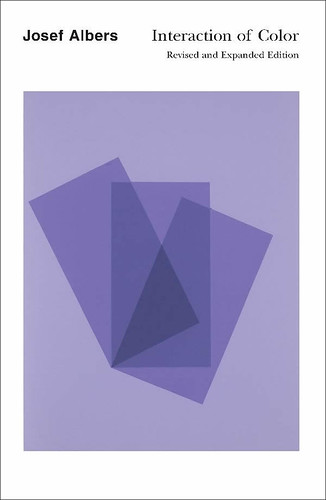 I have this book, The Interaction of Color by Josef Albers, out of the library at the moment. First published in 1963, it appeared in paperback in 1971 and has remained in print ever since. This, the most recent edition was published in 2006. It was written as a workbook for teachers and students. Each chapter touches on a different aspect of colour theory such as relativity, intensity, contrast, mixture, subtraction, transparency and transformation. Albers writes,
I have this book, The Interaction of Color by Josef Albers, out of the library at the moment. First published in 1963, it appeared in paperback in 1971 and has remained in print ever since. This, the most recent edition was published in 2006. It was written as a workbook for teachers and students. Each chapter touches on a different aspect of colour theory such as relativity, intensity, contrast, mixture, subtraction, transparency and transformation. Albers writes,
"The book is a record of an experimental way of studying and teaching color. The aim of such study is to develop--through experience--by trial and error--an eye for color."I was most interested in the work with transparency discussed in Chapter IX: Color mixing in paper--illusion of transparence. The idea is to to mimic colour mixing but to work with coloured paper not directly with paint. I wanted to do this using fabric and started with this example from the book.
In my first 15" x 15" block I re-created an image of three black bars laying over a white strip, against a medium colour background. The impression of transparency is created by laying intermediate colour fabrics adjacent to the lighter fabric in such a way that the lighter colour appears to show through the bar of fabric laying over it.
This is my first blocki

my second made anoti

and my third tine I mi
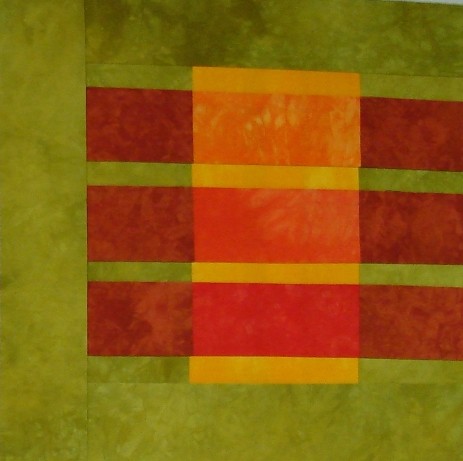
Next, to try something different I worked from another paper collage, again from Alber's book in which he has placed colours together in such a way as to give the impression of a clear sheet of plastic laying over four coloured squares,
and then I made anot
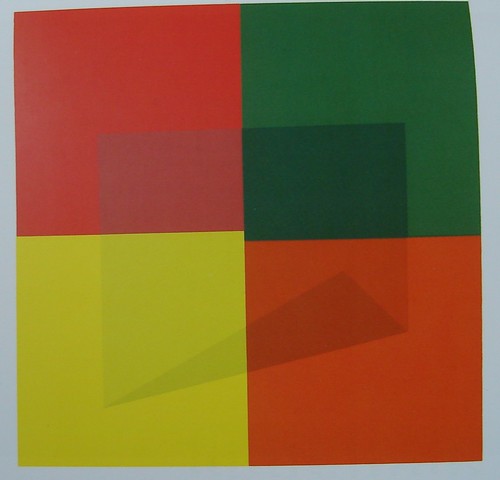
I chose my fabrics thi
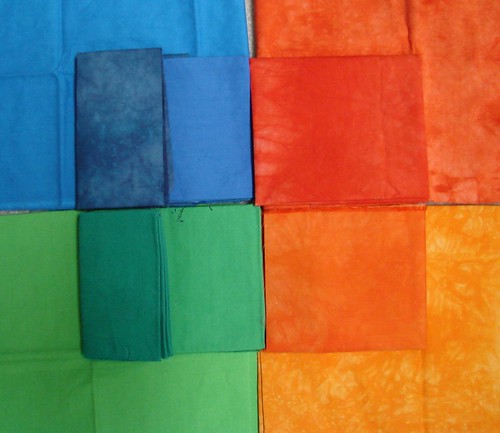
and put my blocks together like so:
Besides playing with colour mixing and transparency I worked without templates or a pattern for the first time. I cut the fabric free-hand with a rotary cutter which was very freeing and felt great.
Lessons learned: When choosing fabrics it was very difficult for me to judge whether I was actually getting the effect that I wanted when looking directly at the fabrics. What helped a lot was looking at the fabric from a distance, reflected in a large mirror that I have hanging on the wall of my work room.
Next, I'll machine quilt this piece. One person who has seen it suggested black concentric circles placed a bit off-center. I need to decide between black thread or a variegated multi-colour thread. We'll see.
Here are more examples of work that plays with the effect of transparency in different media. Click on an image to see it in its original context.
 | Ingela Albers Transparenz 1954 | 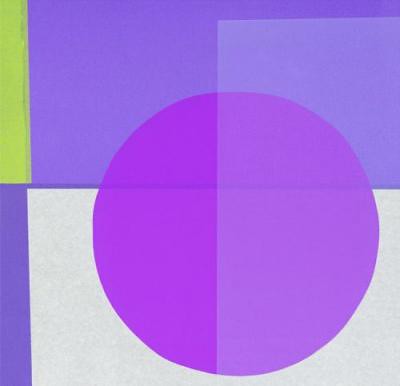 | Emily Holyfield Purple Haze |
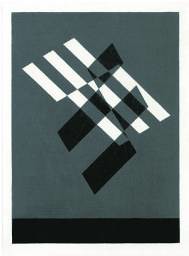 | Josef Albers Volando 1935 | 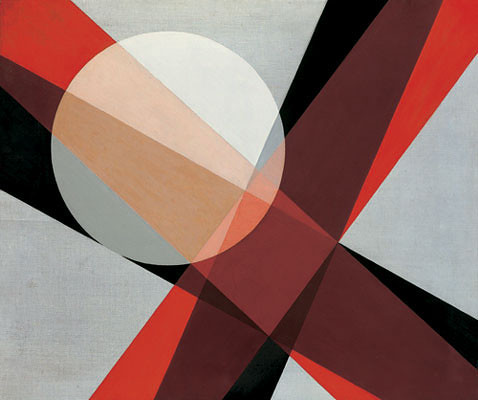 | László Moholy-Nagy A19 1927 oil on canvas |
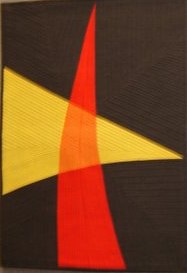 | Barbara McQuarrie The Power of Nine Quilt | 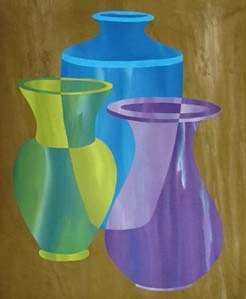 | Robbi Joy Eklow Fused fabric |

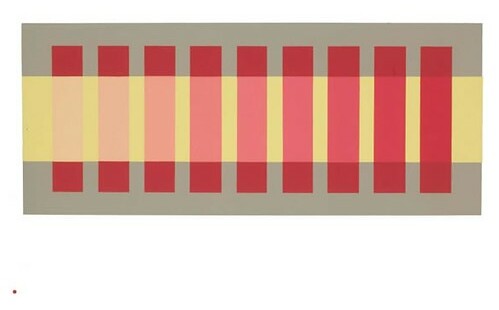
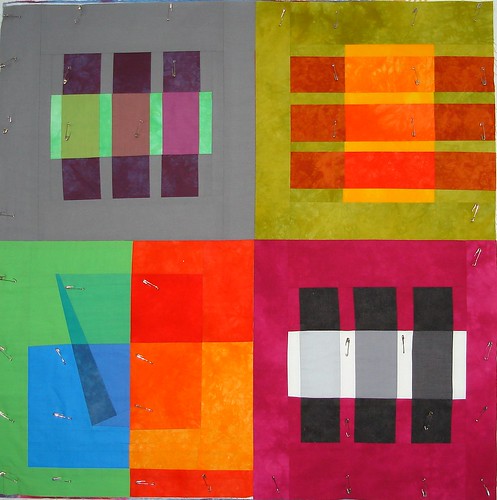
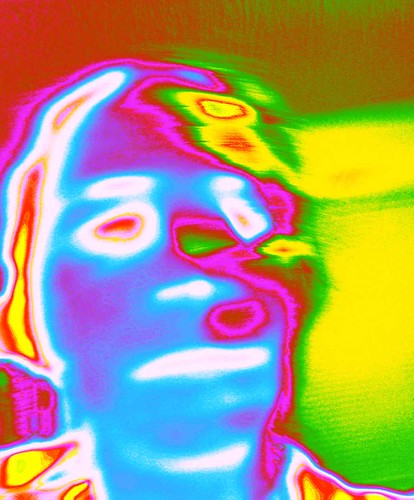
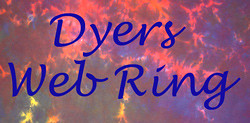








2 comments:
I like what you're doing. Great idea to explore with fabric. I'd love to see how this concept could be taken further.
Thanks! I'd like to try doing something original now that I've had a chance to play around with this a bit. I especially like the way the illusion of transparency can add depth to a 2D piece.
Post a Comment